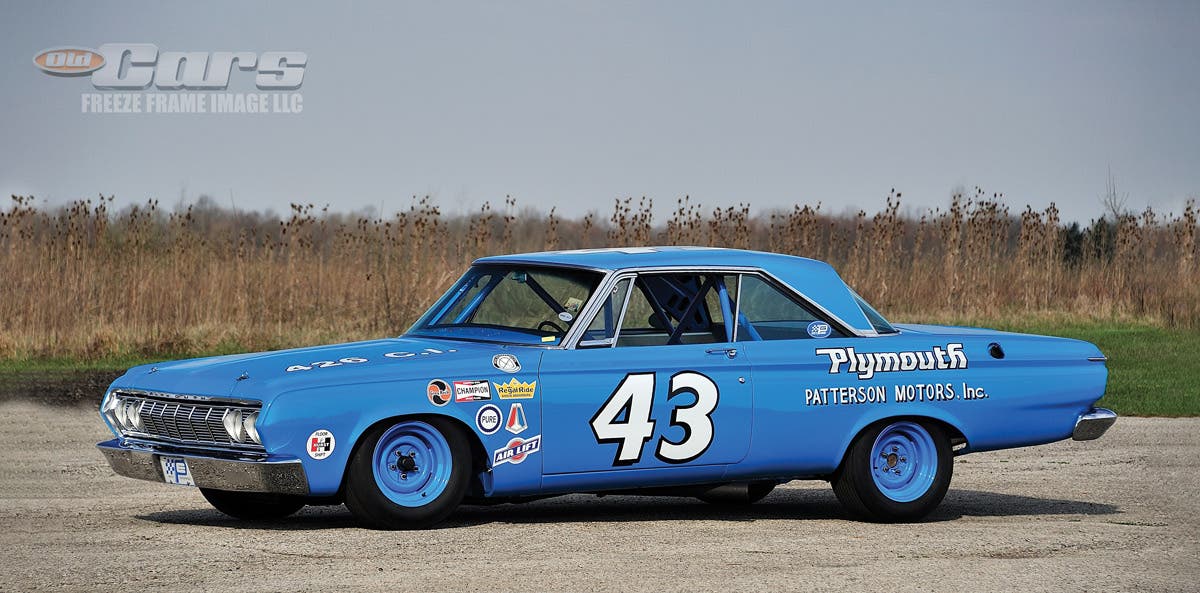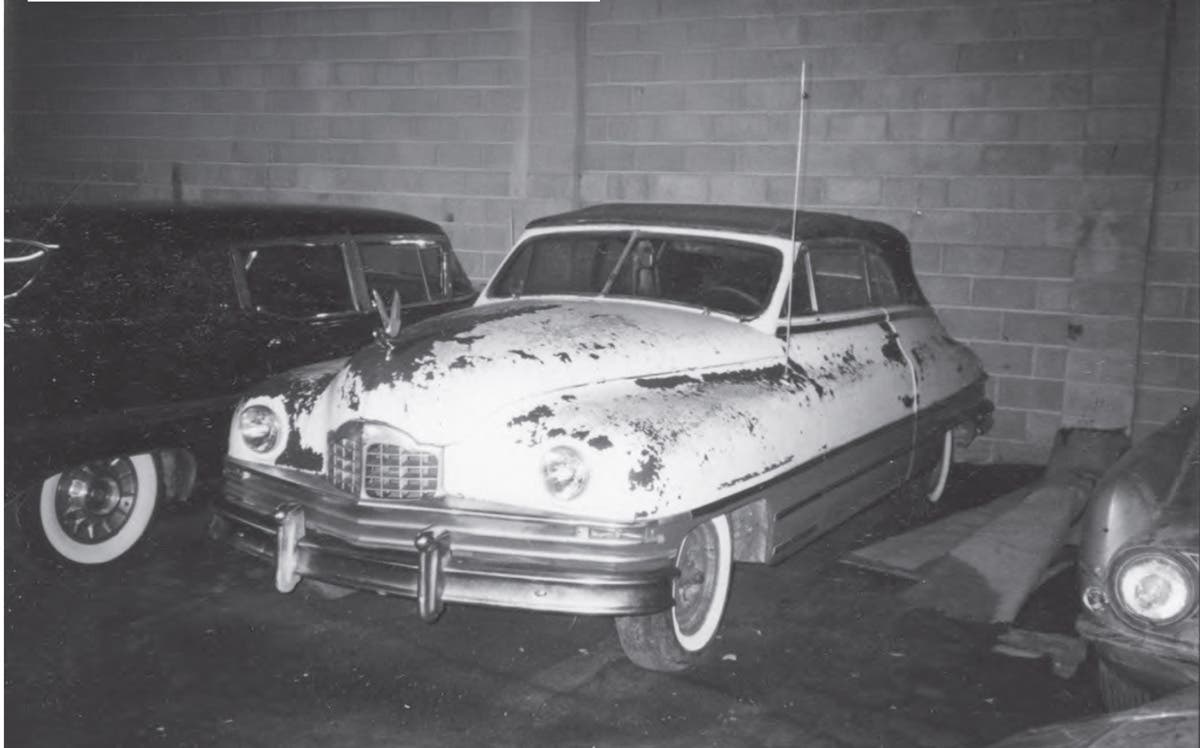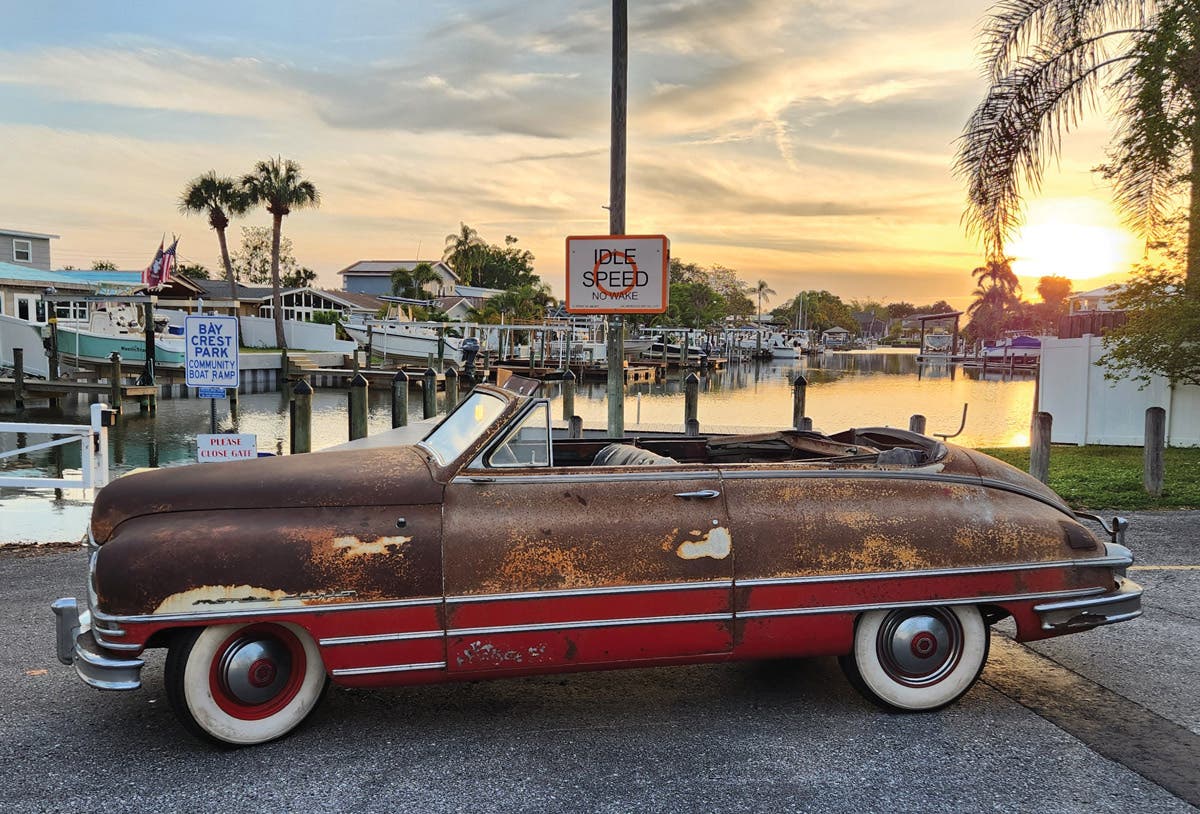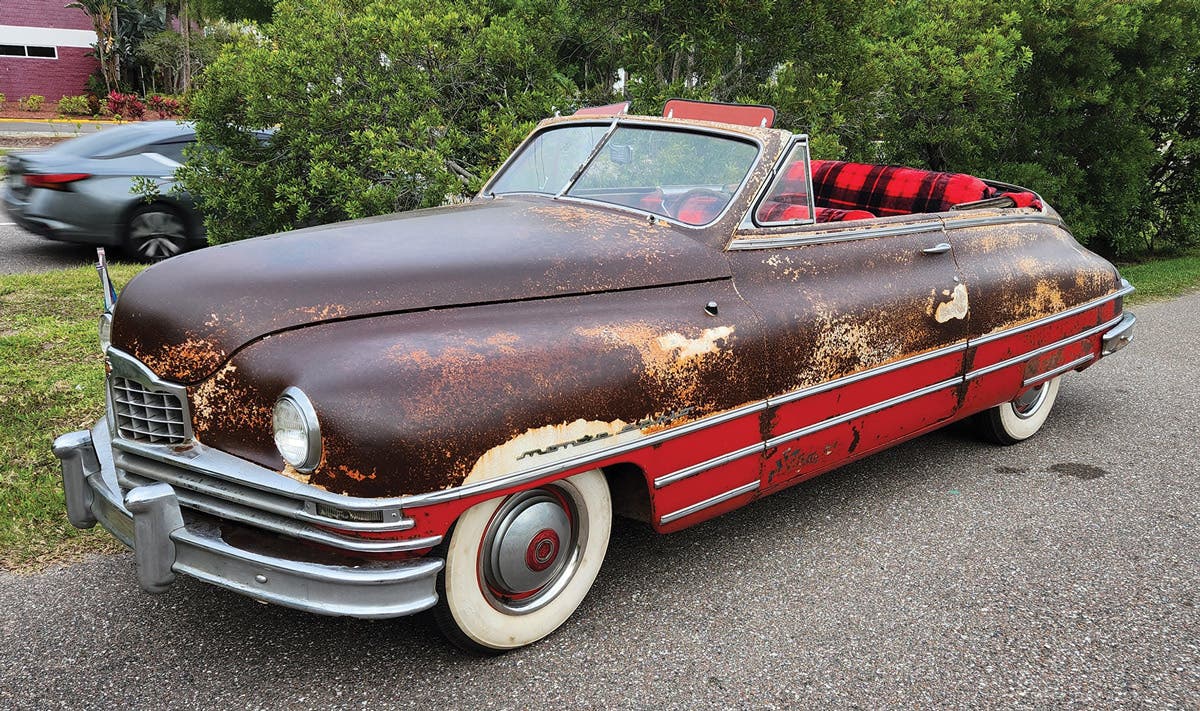A Studebaker Delivery gets a lifeline
Most people would have said the 1951 Studebaker 2R6 stepvan was in Old Cars Price Guide #6 condition and beyond restoration. Undaunted Dr. George Hamlin resurrected it to glory.
Dr. George Hamlin has made a career out of restoring the health of his patients, but the Clarksville, Md., doctor also has a weakness for reviving vehicles.
A case in point is his 1951 Studebaker 2R6 stepvan. A fellow Studebaker admirer clued Dr. Hamlin to the decrepit truck. It was parked behind an outbuilding in Manassas, Va., next to the historic Bull Run stream where the first major battle of the U.S. Civil War took place. When Dr. Hamlin saw the stepvan, it was in terminal condition. The Studebaker was slowly sinking into the earth, had ventilated sheet metal from numerous bullet holes, lacked glass in all of its eight window openings and would become flooded when Bull Run overflowed.
Most people would have said the truck was in Old Cars Price Guide #6 condition and beyond restoration. It probably would have required a tetanus shot just to be near it, let alone in it. Without a doubt, the flatlined van was on its way to the great parking lot in the sky.
The van pulled at Dr. Hamlin’s heartstrings, especially since he has a soft spot for Studebakers. I can understand, having had a used 1962 Lark that I bought from Bell Telephone when I was in college. Dr. Hamlin has an appreciation for this ordinary work-for-a-living truck. He knew it would be an ambitious project in need of lots of care. Besides being a collector and restorer of Studebakers, Dr. Hamlin is also a published auto historian. He wrote “Studebaker Professional Cars,” a 316-page book with more than 300 photos of Studebaker-based hearses, ambulances, limousines and police cars, so the truck was right up his alley.
The 2R6 designation of the truck Dr. Hamlin found referred to Studebaker’s 1/2-ton truck with the larger 245-cid 6-cylinder engine that produced 102 hp and 245 lb.-ft. of torque. Studebaker built the 2R from 1949 to 1953.
Studebaker trucks had updated styling in 1949 that was designed by Robert Bourke, who is credited for the sensational 1953 Studebaker Starliner hardtop and Starlight coupe. The 2R truck was available as a chassis, pickup or stake bed.
The titles of vehicles in similarly decrepit states have often been lost over time, so Dr. Hamlin was surprised that the owner had the title and was willing to sell the van. The transfer took place back in March 1978.
The chassis and front clip with fenders, grille, hood and bumper of Dr. Hamlin’s stepvan originally traveled from Studebaker’s factory in South Bend, Ind., to Boyertown Auto Body Works in Boyertown, Pa. There, the “Step-n-Serve” stepvan body was built.
The chassis upon which the Boyertown stepvan body was mounted had Studebaker’s 112-inch wheelbase. Whereas the 2R pickup was 15.4 feet in length, the conversion grew the truck’s overall length to 16.5 feet, and while the pickup was 5.3 feet high, the step-van increased that dimension more than 3 feet to a total of 8.9 feet. Additionally, the stepvan’s cargo floor was 1 foot longer than the standard Studebaker 6.4-ft.-long pickup bed. The interior space seems as curvaceous as a cathedral so that a 6-foot person can stand and move around within the utility hauler. Aiding access to the stepvan body are a pair of side-by-side rear barn doors, each with a window. The step-through cab has sliding side doors similar to those used on the Kaiser-Darrin. This writer drove a step-n-serve van during college and was glad there were left and right outside mirrors, because there is no over-the-shoulder visibility in these vans.
The Step-n-Serve was shipped to S.J. Meek’s & Sons Studebaker dealership in Rockville, Va., and sold on Nov. 5, 1951. It was used to deliver Tom’s Roasted Peanuts to stores and vending machines.
Henry and Clem Studebaker started making horse-drawn wagons in 1852. Studebaker began experimenting with motorized transportation in 1902. It still built horse-drawn vehicles until 1920, when Studebaker sold its wagon works to Kentucky Wagon Co. Meanwhile, Boyertown Carriage Works started making horse-drawn vehicles in 1911. Its first delivery truck body was used on a Ford Model T in 1914. The firm went on to build all manner of commercial bodies on light-duty trucks in 1918. The company’s name was changed in 1926 to Boyertown Auto Body Works.
Tom Huston founded Tom’s Roasted Peanuts in 1925. His nickel bags of peanuts were sold all over the United States. However, during the Great Depression, Huston did not pay his bank notes and lost his company. Walter Richard paid these notes in 1932 and acquired Tom’s. He was in charge of the firm when Dr. Hamlin’s 1951 Studebaker van was built to deliver Tom’s Roasted Peanuts.
A crane was needed to get Dr. Hamlin’s 4,600-pound Studebaker stepvan out of the muck along Bull Run and onto a trailer. Dr. Hamlin completed a professional restoration of the truck at his home and took no shortcuts. Rusted metal was removed and patch panels were welded in their place. The brakes, wheel bearings, front suspension, tube shocks, gas line and more had to be replaced. Fresh rubber seals surrounded new windows. The engine was overhauled, and Dr. Hamlin added overdrive.
The van originally came with a grille guard with the Studebaker “S” in the center, one swivel seat, dual windshield wipers and a heater and defroster. Dr. Hamlin added a radio, wheel trim rings, a parabolic external mirror and Class A turn signals.
The van reminded Dr. Hamlin of a different time, place and age. He decided to make it look like a Des Moines Register delivery truck, because in his youth, he hand-delivered the newspaper to his neighbors.
Tom’s delivery trucks, such as this 1951 Studebaker stepvan, had black fenders and silver bodies. In converting the peanut truck into a newspaper truck, Dr. Hamlin kept the fenders black, but painted the outside body a high-impact orange color to reflect its new livery. The interior walls, floor, ceiling and inner doors were repainted gray. The instrument board was painted orange while the black gauge panel and glove box door were sprayed in black. The column-mounted three-speed manual is perched behind the two-spoke steering wheel.
In some ways, driving the Studebaker stepvan may seem alien to those used to modern trucks. Back in the middle of the last century, the thought was that one did not know how to drive if one could not handle a standard shift. The vacuum wipers may additionally surprise younger drivers when the wipers slow down during acceleration or when climbing a hill. However, thanks to Dr. Hamlin’s efforts to save his Step-n-Serve from extinction, it remains ready to deliver peanuts or newspapers to new generations — even if it lacks a few modern conveniences.
Looking for more delivery articles? Here are a few more for your reading enjoyment.
If you like stories like these and other classic car features, check out Old Cars magazine. CLICK HERE to subscribe.
Want a taste of Old Cars magazine first? Sign up for our weekly e-newsletter and get a FREE complimentary digital issue download of our print magazine.
*As an Amazon Associate, Old Cars earns from qualifying purchases







